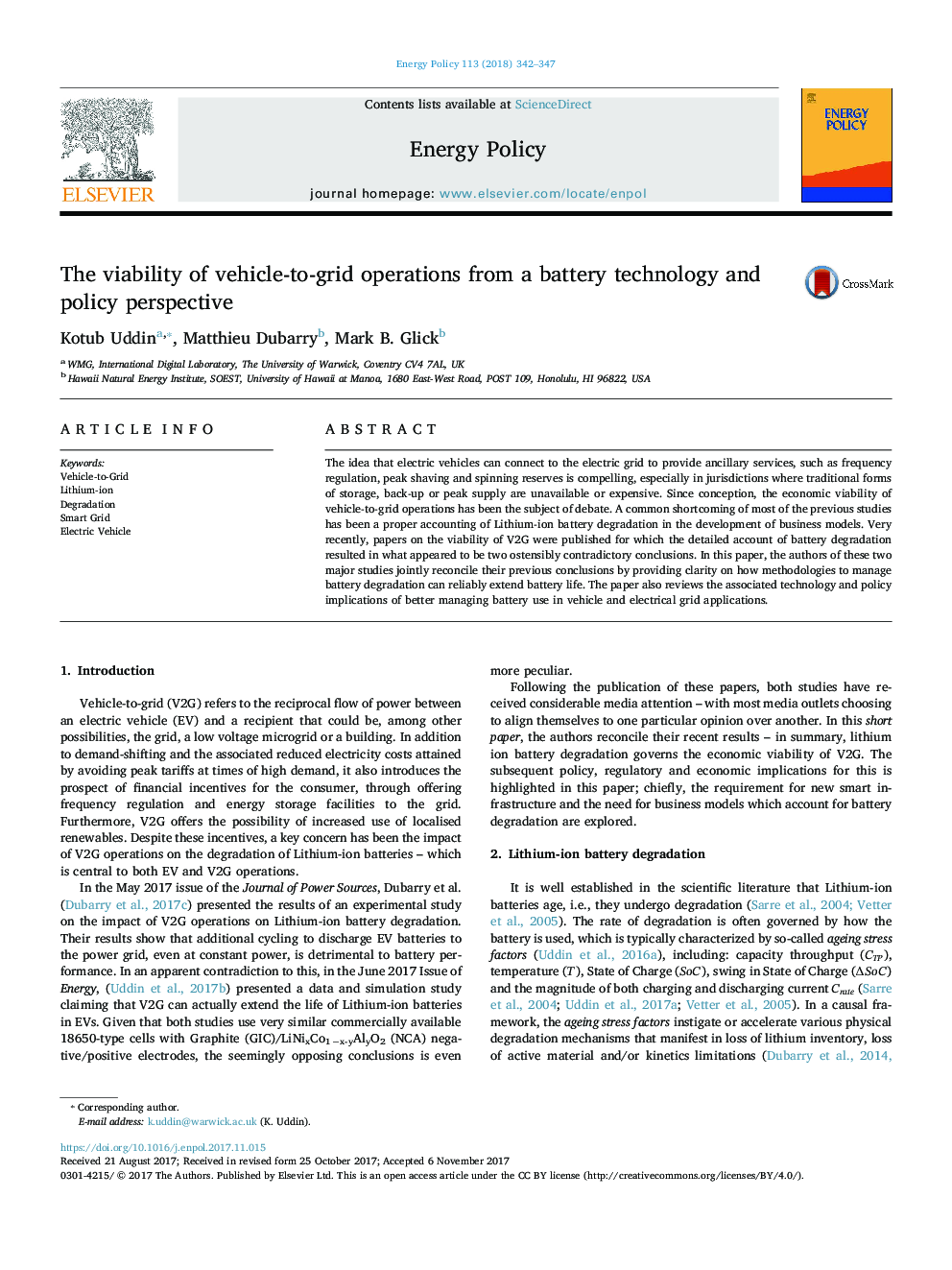| Article ID | Journal | Published Year | Pages | File Type |
|---|---|---|---|---|
| 7397756 | Energy Policy | 2018 | 6 Pages |
Abstract
The idea that electric vehicles can connect to the electric grid to provide ancillary services, such as frequency regulation, peak shaving and spinning reserves is compelling, especially in jurisdictions where traditional forms of storage, back-up or peak supply are unavailable or expensive. Since conception, the economic viability of vehicle-to-grid operations has been the subject of debate. A common shortcoming of most of the previous studies has been a proper accounting of Lithium-ion battery degradation in the development of business models. Very recently, papers on the viability of V2G were published for which the detailed account of battery degradation resulted in what appeared to be two ostensibly contradictory conclusions. In this paper, the authors of these two major studies jointly reconcile their previous conclusions by providing clarity on how methodologies to manage battery degradation can reliably extend battery life. The paper also reviews the associated technology and policy implications of better managing battery use in vehicle and electrical grid applications.
Related Topics
Physical Sciences and Engineering
Energy
Energy Engineering and Power Technology
Authors
Kotub Uddin, Matthieu Dubarry, Mark B. Glick,
